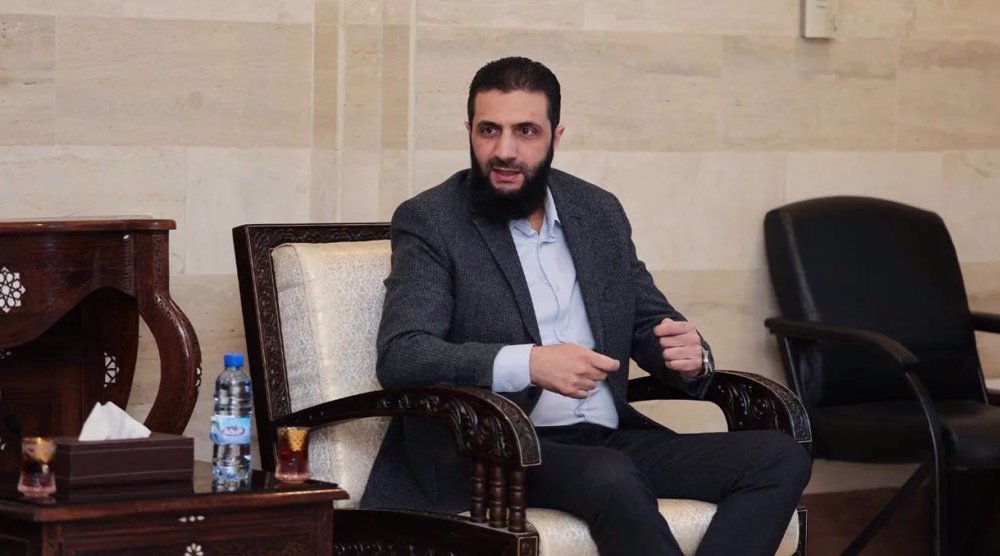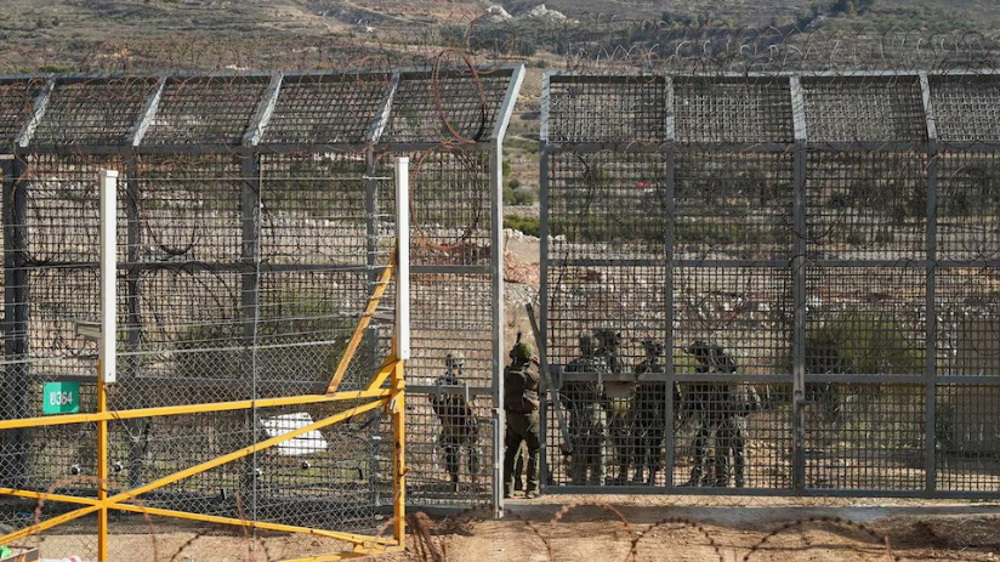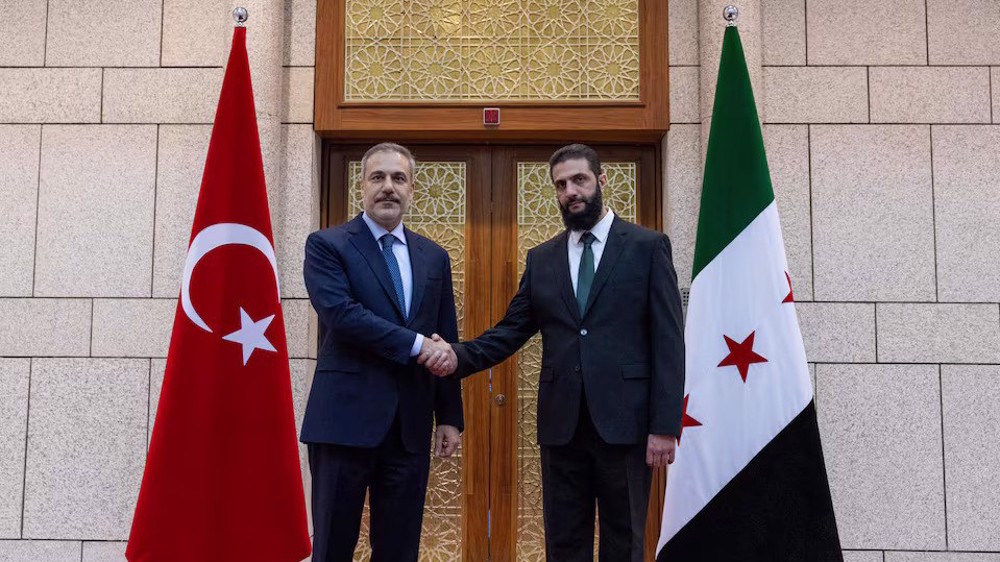Syrian army forces kill high-profile terrorist commander, two aides near Damascus
Syrian government forces have launched separate operations against positions of foreign-sponsored Takfiri militant groups in the country’s southwestern province of Rif Dimashq, inflicting heavy losses on their ranks.
The media bureau of Syria’s Joint Operations Command, in a statement released on Saturday, announced that Syrian Air Force fighter jets had bombarded the strongholds of Daesh and Jabhat Fateh al-Sham, formerly known as al-Nusra Front, in al-Hajar al-Aswad city, located just four kilometers south of Damascus.
The statement added that Syrian army troops also carried out missile strikes and fired artillery rounds at Daesh positions in Yarmouk refugee camp, situated 8 kilometers from the center of Damascus, killing Abu Hisham Khabouri and his close associate Abu Ali Nafsha.

A distinguished Daesh militant responsible for the financial affairs of the terror outfit was killed in the counter-terrorism operation as well.
Khabouri was elected Daesh governor in Rif Dimashq in late August 2016, following the dismissal of Abu Sayah Tayyarah, better known by the nom de guerre Farramah, and his deputy Abu Mujahid.
Khabouri, a native of the occupied Golan Heights, was considered one of the four most important Daesh figures operating south of Damascus.
Meanwhile, the Syrian army and its allies advanced towards Tadamon neighborhood in south Damascus after clashes with Daesh.
The Syrian army on April 14 declared the liberation of Douma town after the last pockets of militants from the so-called Jaish al-Islam group and their families left their last bastion in the Eastern Ghouta countryside of Damascus.
The militants and their relatives were fully evacuated to the militant-held city of Jarablus in northern Syria.
Early on April 14, the United States, Britain and France carried out a string of airstrikes against Syria over a suspected chemical attack against Douma. Washington and its allies blamed Damascus for the suspected assault.
The Syrian government strongly denied the allegation and called on the Organization for the Prohibition of Chemical Weapons (OPCW) to send a fact-finding mission for investigations. The watchdog's inspectors are currently in Douma.
However, the US and its allies carried out the strike on the day the mission just arrived in Damascus.

The Pentagon said in a statement that at least 58 missiles had struck Shayrat air base in the western Syrian city of Homs. An unnamed US official said Tomahawk missiles were used in the strikes.
The United Kingdom's Royal Air Force said four Tornado GR4s fighter jets had joined the operation, while France said it had deployed Mirage and Rafale fighter jets.
Russian General Staff spokesman General Sergei Rudskoy, however, said Syrian air defense systems had intercepted at least 71 cruise missiles fired during the US-led aggression.
Speaking at a news conference in Moscow on the day of the airstrikes, Rudskoy said at least 103 cruise missiles, including Tomahawks, had been fired into a number of targets in Syria.
“Russia has fully restored the air defense system of Syria, and it continues to improve it over the last six months,” he said.
OPCW visit Syria site, take samples
International experts from the OPCW on Saturday visited the site of the suspected chemical attack and took samples.
A fact-finding mission from the agency visited Douma "today to collect samples for analysis in connection with allegations of chemical weapons use on 7 April 2018. The OPCW will evaluate the situation and consider future steps, including another possible visit to Douma," the OPCW said in a statement.
The samples will be sent to the OPCW Laboratory in Rijswijk, a suburb of The Hague, and then analyzed by designated labs, the agency added.
The statement said that "based on the analysis of the sample results as well other information and materials collected by the team" a report will be drawn up.
Mikati demands Israel's withdrawal from south Lebanon
Yemeni army strikes Israeli military sites with drones
‘Clock ticking’: UNRWA slams unjustifiable killing of children in Gaza
BP to be sued in Britain for supplying oil to Israel
VIDEO | Press TV's news headlines
Israeli strikes on north Gaza hospital ‘extremely dangerous, terrifying’: Director
VIDEO | Yemen targets Tel Aviv with Palestine 2 missiles
Pezeshkian: Iran resolved to complete North-South Transport Corridor















 This makes it easy to access the Press TV website
This makes it easy to access the Press TV website